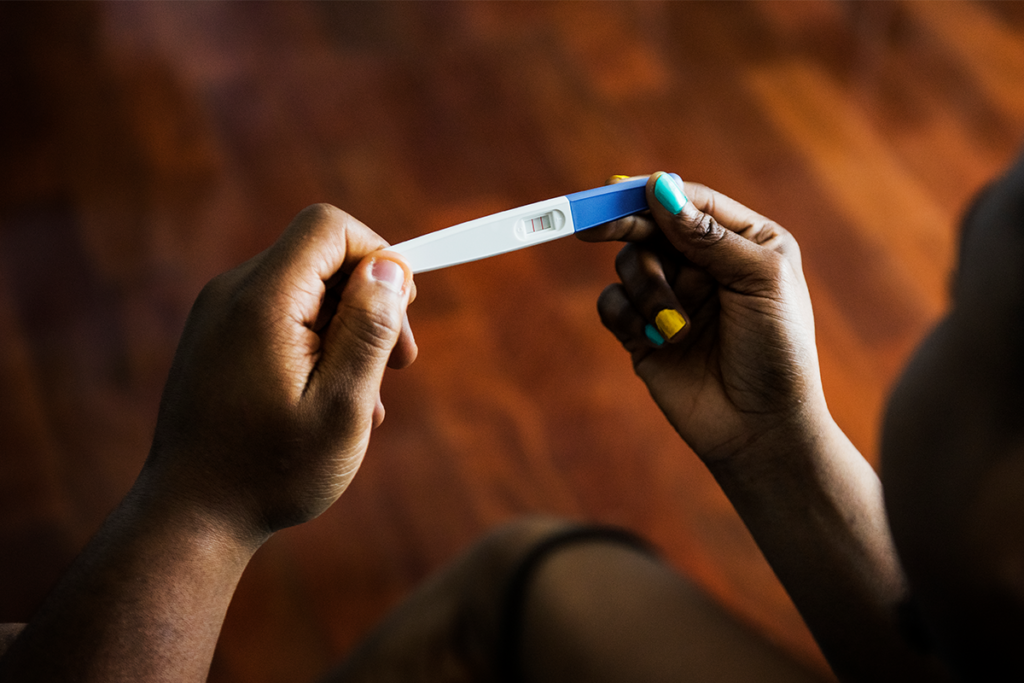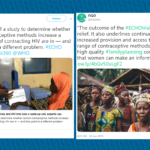Like most couples, many HIV-serodiscordant partners have childbearing desires that typically require the need for unprotected sex. However, if HIV viral load is not sufficiently suppressed and other precautions used, this desire for children poses substantial risk of HIV transmission in serodiscordant partnerships (Yang et al., 2015). In this post, I summarize Grace Kimemia and her colleagues’ new paper on “Perceptions of pregnancy occurring among HIV-serodiscordant couples in Kenya” and examine their findings while also identifying synergies with prior studies.
I admit I am a climate change person and thus have little exposure to some of the topical issues and concepts in public health. I have heard about “HIV” and “couples” but certainly not the “serodiscordant” in “HIV-serodiscordant couples”. Thanks to Kimemia et al.’s new study it didn’t take long to appreciate what the term meant, the difficulties such couples face, and the opportunities available to support their reproductive goals. I find the article educational, revealing and thought-provoking. Otherwise referred to as serodifferent or mixed-status couples, HIV-serodiscordancy is when one partner is HIV positive and the other is not.
Research objectives and approach
Kimemia et al. employ a mixed-method approach, consisting of 20 key informant interviews (KIIs) with health care providers working with HIV-serodiscordant couples desiring to have children and 21 in-depth interviews (IDIs) and 4 focus group discussions (FGDs) with a total of 25 participants stratified by gender and HIV status. The diversity of the research participants necessitated the use of different languages – Kikuyu, Kiswahili and English. While the researchers conducted the IDIs in all three languages (depending on participants’ preferences), they used either English or Kiswahili to conduct the FGDs. KIIs with health care providers used English only.
Using an inductive approach (informed by grounded theory methodology) in their data analysis, Kimemia et al. identify two emergent themes: (i) perceptions towards pregnancy among HIV-serodiscordant partners and (ii) access to safer conception services.
What did the study find?
The researchers make some revelations about the different perceptions acting against the childbearing aspirations of HIV-serodiscordant couples and summarize these into three: (i) community’s negative attitude towards HIV-serodiscordant couples’ childbearing aspirations, (ii) HIV-serodiscordant couples’ low knowledge of safer conception services and (iii) limited capacity on the part of health care providers to provide safer conception information services.
Even more disturbing is the perception that HIV positive parents, by virtue of their medical conditions, won’t be able to give birth to children healthy enough to live long. Even when the child looks strong, there still are people holding the perception that the HIV-serodiscordant parents in question can’t live long enough to take care of their young ones. The comment below from an HIV-positive female participant in one of the FGDs, as quoted in the paper, perhaps vividly describes the discomfort couples go through:
“What they usually say … When this wife gives birth, they want to see if she will breastfeed the child or she will stop and will she give birth to a child who is alive or they will die because many believe if you give birth to a child with virus, they usually die.”
There is something else that the researchers found. HIV-serodiscordant partners have limited knowledge of safer conception services. Consequently, couples are often unable to explore opportunities and services supportive of their childbearing aspirations. This lack of information kills their fertility goals and makes them feel unsure about whether they could successfully conceive without transmitting the HIV virus to the negative partner. Where couples are somewhat aware of safer conception services, they also find the cost of such services too expensive and financially inaccessible.
Kimemia et al. also find counseling to be important in helping HIV-serodiscordant couples not only reduce the danger of HIV transmission during conception but also pursue their childbearing goals. Notwithstanding, the lack of supportive services and limited technical capacity on the part of providers makes health care workers ill-prepared and less effective in offering safer conception services. According to Saleem et al. (2016), these barriers include “limited safer conception policy guidelines for people living with HIV (PLHIV), lack of health provider training in safer conception strategies and preconception counseling for PLHIV, limited resources, and lack of integration of HIV and sexual and reproductive health services.” A response from one of the health providers working at a fertility clinic, as quoted in the paper, confirms some of the difficulties health care providers and HIV-serodiscordant partners face:
“Well, it has been a challenge because most of the time, we do not have a structured way of providing solutions to their needs, so you have to keep on referring from one point to the other, yeah.”
Final thoughts
It is apparent from Grace Kimemia and her colleagues’ study that childbearing is an aspiration many couples share – be they HIV negative or positive. Often, however, the stigma the latter faces is so strong that they can become discouraged and eventually give up on their dreams of having children. Educational programs that sensitize communities on HIV-serodiscordancy can go a long way to dispel such negativities and boost confidence in couples’ decision-making processes about childbearing.
Improving couples’ access to HIV-serodiscordancy counseling and targeted services is important too (Stephenson et al., 2010), and so is the need to ensure that health care workers are sufficiently trained and empowered through varying capacity building interventions (Saleem et al. 2016). These interventions can improve access to and knowledge of contraception services for the former and adequately prepare the latter to deliver services that support the childbearing aspirations of mixed-status couples. As suggested in Bharat and Mahendra (2007), training programs for health care providers must be designed to promote self-reflection on their attitudes, values, biases, knowledge levels and practice in HIV care and to develop sensitivity to people’s right to care and treatment irrespective of their HIV status or mode of HIV acquisition.
Kimemia et al.’s work is produced by a group of researchers from the African Population and Health Research Center, Jomo Kenyatta University of Agriculture and Technology, University of Washington, FHI 360 and the Kenya Medical Research Institute.
Photo credit: Rawpixel/Getty Images



